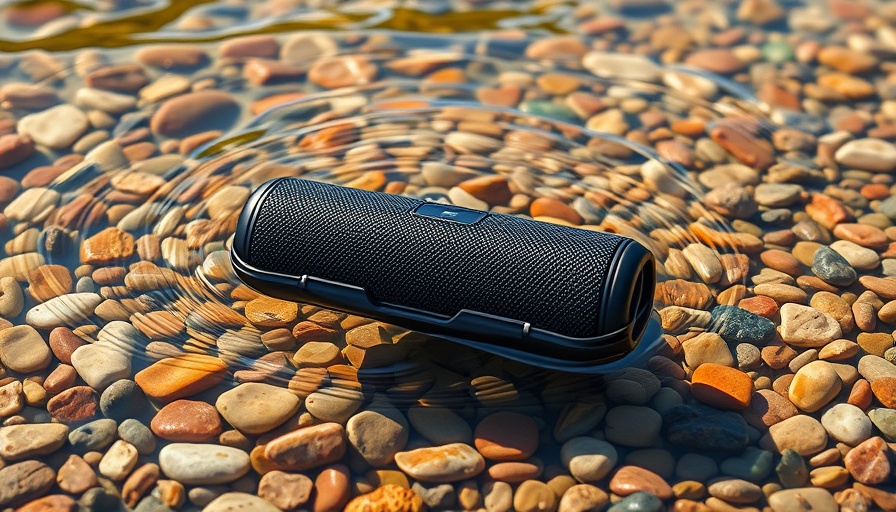
The Evolution of Gaming Earbuds: Introducing the Truthear x Crinacle Zero: Blue 2
The gaming audio landscape continues to evolve, and the introduction of the Truthear x Crinacle Zero: Blue 2 signals a notable progression for enthusiasts seeking superior sound quality in their gameplay. Building on the success of its predecessor, the original Zero: Blue, this new IEM (In-Ear Monitor) positions itself to cater to gamers who relish immersive audio experiences. However, it's crucial to ask: does this upgrade meet the expectations and demands of today's competitive gamers?
What Makes the Truthear x Crinacle Zero: Blue 2 Stand Out?
First and foremost, the standout feature of the Truthear x Crinacle Zero: Blue 2 is its bass-heavy performance. As the review highlights, the earbuds are designed primarily for action games where deep explosions and rumbling soundscapes take precedence. The focus on bass makes these IEMs perfect for enjoying games like first-person shooters and action-adventure titles, granting players an edge by allowing them to hear directional cues clearly in chaotic environments.
However, a note of caution is due here: while the bass enhancement will thrill casual gamers and bass heads, it may present an overwhelming experience for music listeners who appreciate balanced audio. This duality of audience specificity sets a potentially divisive tone, as enthusiasts may find the sound profile ultimately unfavorable for genres that require clarity and subtlety.
Designing for the Gamers: A Visual and Functional Appeal
The design of the Truthear x Crinacle Zero: Blue 2 is eye-catching, boasting a glossy shell with an enticing blue design that's reminiscent of both scales and feathers. This not only makes the earbuds stand out visually but also aligns with a modern aesthetic that gamers admire. Moreover, the earbuds come with separately designed cables that include an inline mic, showcasing a thoughtful approach to user convenience.
That said, while the aesthetic and design might appeal to many, comfort may be a concern for some users. With a reported comfort rating of only 4 out of 10, potential buyers might need to prepare for some discomfort during prolonged gaming sessions. This factor is particularly important for gamers who enjoy long gameplay hours or are engaged in marathon sessions.
How Do They Compare with Previous Models?
Reflecting on competitive models, the Zero: Blue 2 aims to solidify its status within a crowded IEM marketplace. Its predecessor set a high standard among gaming IEMs, especially for competitive shooters who sought a sensory edge. Compared to the original model, the enhanced bass response had some expecting a more refined overall audio performance. The question lingering among enthusiasts is whether the improvements justify upgrading or if users should remain loyal to the original.
Comparatively, many rival brands are stepping up their game as well, offering various models tuned to suit specific genres of gaming. Within this context, the Zero: Blue 2 needs to demonstrate its unique value proposition to maintain a competitive edge.
Future Directions in Gaming Audio
As discussions around gaming audio continue, it's important to consider where technology might be headed. The rise of customizable DSP (Digital Signal Processing) in audio gear offers intriguing possibilities for future IEM models. Imagine a world where individual gamers can tailor their sound profiles to match their specific hearing preferences, optimizing their personal experiences. That future could very well be on the horizon, hence it is crucial for manufacturers like Truthear to innovate alongside such trends.
Final Thoughts: Are They Worth It?
In conclusion, the Truthear x Crinacle Zero: Blue 2 is an appealing option for those ready to embrace a bass-heavy auditory experience tailored for gaming. Its striking design complements the audio experience, though comfort remains a possible drawback for extended use. Gamers interested in prioritizing bass over balanced audio may find a reliable companion in this IEM.
As the gaming audio sector continues to evolve, staying updated on new technologies and trends is essential, especially if you’re an avid gamer looking to sharpen your competitive edge. The Truthear x Crinacle Zero: Blue 2 isn’t just another component in gaming gear; it symbolizes a step toward more immersive audio experiences tailored to the needs of modern gamers.
 Add Row
Add Row  Add
Add 




Write A Comment